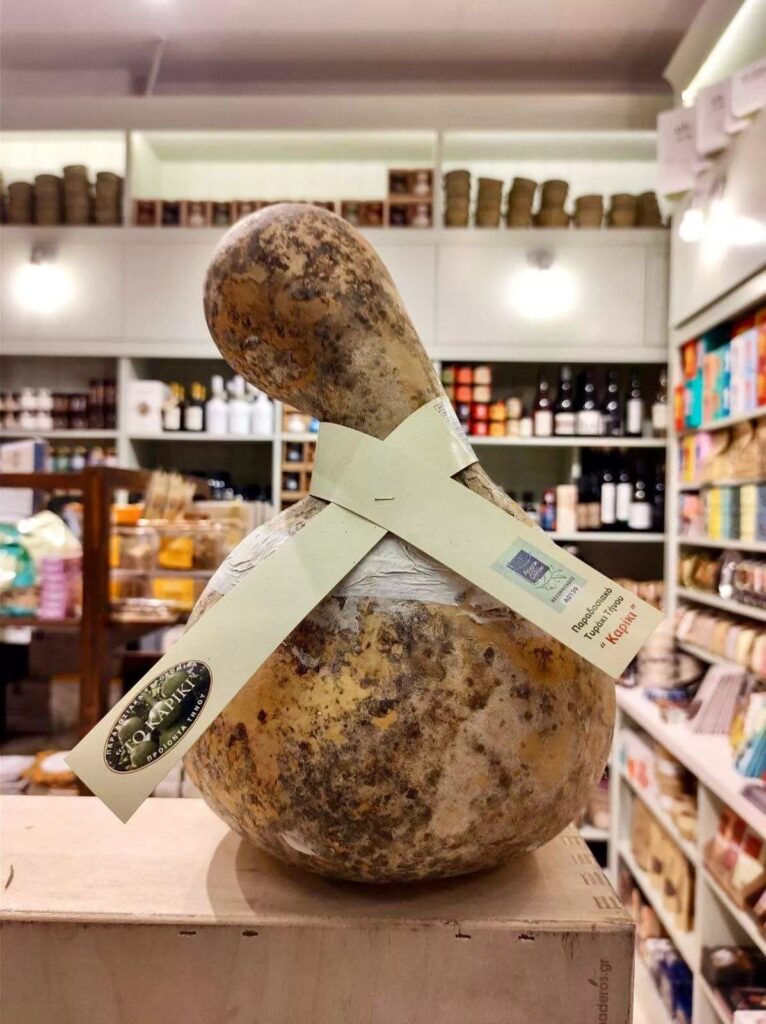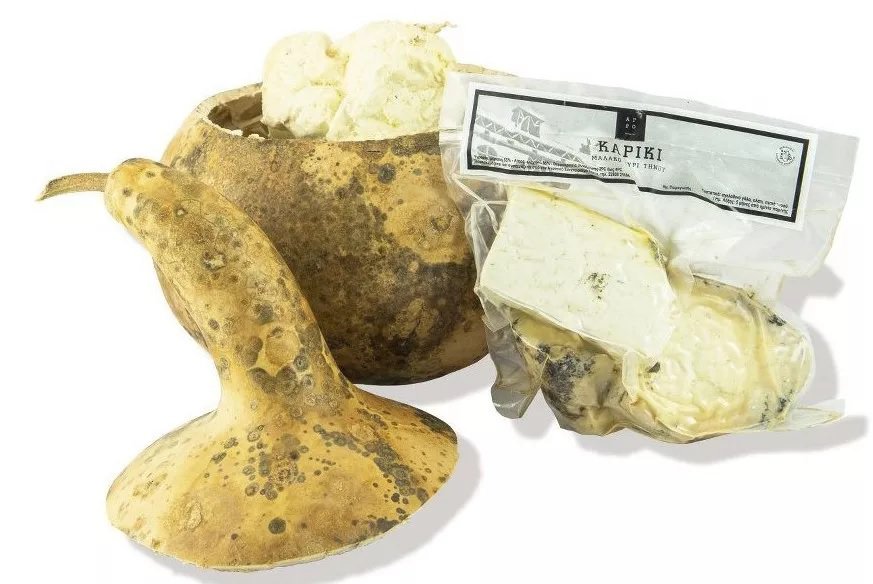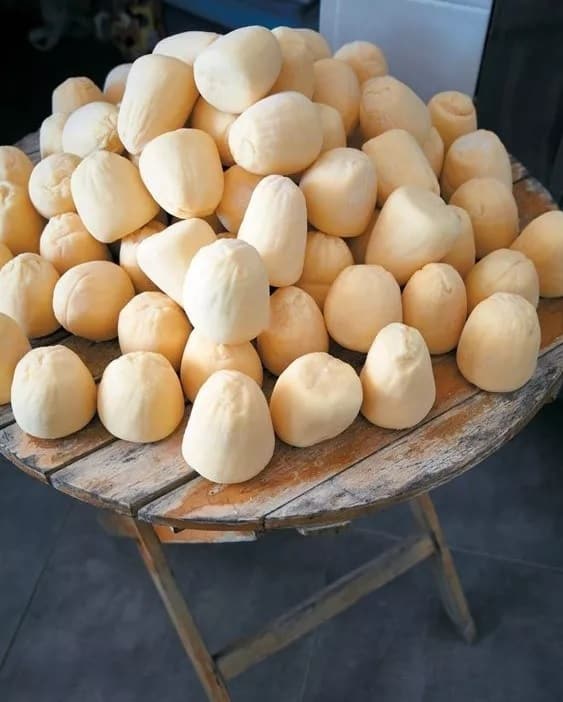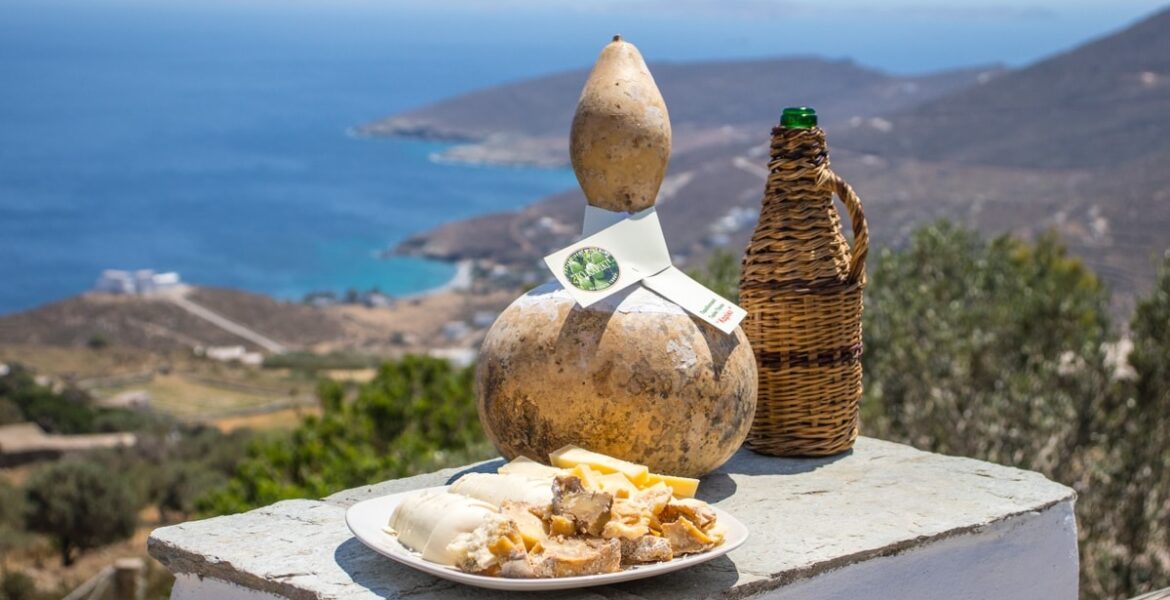In recent years, the blue cheese of Tinos has started to gain publicity and great demand. It is a traditional product brought back to the fore 10 years ago by Angela Rouggeri-Vidou in her Tinian cheese factory.
She started the production on the island of Tinos and made it known by promoting it through exhibitions and other events, New Money reported.
As a result, more people learned about it and distinguished, and because of her, there is an increase in demand.
What's so special about this cheese? As Mr. Kostas Desypris (with the nickname "Kouroupas") explained, the production of this particular cheese is quite tricky as it needs special conditions and a long period to be ready (4-6 months).
At the same time, there is a risk that it will not succeed its production if it is an extra cold winter, which is why its production is limited on the island. However, it has slowly started to gain popularity.
Where does it get its name from? From the way it is prepared. The Water Gourd or Flaskia is a climbing and annual plant. It reaches a height of three metres and produces thick-skinned gourds. These fruits in Tinos are called kariki, and that's how the cheese that ripens inside a gourd got its name.
How is it prepared?

This cheese is made in two stages to achieve the necessary fermentations and obtain its slightly spicy taste and characteristic blue colour at the end of the gourd. Before everything can begin, a prerequisite is to find the gourds, empty and dry them.
In the first stage, the curd is poured in, creating a "skin" around the gourd. This is changed 2-3 times within 24 hours so that it stabilises and the fungus needed to make the cheese can be created. They leave it there for one to five days.
In the second stage, they throw in the stone from the cheese, as they say, taking care to take advantage of all the space of the gourd so that there are no gaps for air to enter from anywhere.
Ultimately, they seal the gourd generously with flour paste and place it in places with a particular temperature (cool and shady place) so that it ripens. When they open the gourd, after 5-6 months, the cheese is orange with blue and green water. Its texture is abrasive, like that of feta cheese.
As Mr. Desypris told us, they usually start the process in October so that it is not too hot, and the kariki is ready in the spring so that there is also availability in the summer, which is also the tourist season on the island.
What is its production?

They fill about 50 gourds a year. Depending on size, each gourd can produce up to 4 karikas. Indeed, her immediate plan is to increase production, but supplies of cow's milk on the island are limited.
As for the water, kariki gourds used to be more challenging to find, but now, due to the increased demand, they have started to plant on the island and are much easier to find.
Where can we find kariki in Tinos?

Just so you know – in a few selected places. Kostas Desypris owns the Kouroupas butcher grocery, and for its production, he collaborates with the "Madalena" cheese factory, which also produces its own kariki.
In Tinos, you will also find it in the Agricultural Cooperative and some restaurants that have started producing due to the increased demand from the world and the particularity of the specific product.
In Athens, Kouroupas collaborates with the Alexandris grocery store in Argyroupoli, and there you will find his own kariki. However, he can easily send it to anyone who asks for it as it is quite easy to transport.
You can also find kariki (not from the specific producer) in selected delis, such as in Karamanlidika of Fanis.
How is kariki consumed?

As Kostas Desypris told us, it is a table cheese, ideal for the summer months, as many chefs match it with the season's fruits, such as grapes and figs. After opening, it can be stored in the refrigerator for up to one month.
READ MORE: Why Do Greeks Sun-Dry Octopuses?


